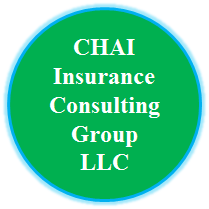Innovations
Purpose
The primary focus of the CHAI intellectual property portfolio (i.e. four patents and six trademarks) is on linking insurance policies, in order to create new insurance products designed to generate health and wealth for the insured(s). For this reason, various insurance and financial innovations developed by the CHAI Insurance Consulting Group LLC have enabled it to move ahead and to set itself apart from the more usual or customary thinking found in the insurance industry.
Specifically, these novel developments involve important revisions to the conventional thinking of key insurance concepts in particular as: endowment, viaticals, the law of large numbers and death benefits.
As such, these various innovations can be extremely important to the financial success of an insurance company with regard to their profitability as well as their marketing strategies.
Therefore, the CHAI Insurance Consulting Group LLC has divested itself from this aforementioned type of thinking and instead invented the novel concepts of: Reverse Viaticals ™, Coenzymes + Cofactors = Copayments ®, Life BeneFIT ™ and the law of small numbers in order to increase the affordability of insurance per se including, for example, the endowment of life insurance policy(s).
In particular, the financial based insurance concepts ofviaticals and endowment have specific importance to the CHAI methodologies.
Viatical and Endowment
Viatical
A viatical settlement (or life settlement) is a financial settlement that seeks to relieve the insured of the burden of the ownership ie fees, premiums and other related costs of an insurance product (typically a life insurance policy) while also offering this previous owner a greatly reduced percentage of the face value of that particular policy.
Typically a viatical settlement (or life settlement in the case of a non terminal patient) is sought by both parties when an insured can no longer afford to pay the aforementioned costs, fees and rising premiums and other such costs commensurate with the maintenance of this policy. A new buyer then becomes the owner of that policy. Thus, while the new owner now maintains this same insurance policy on the previously insured person by assuming all fees, premiums, etc. the previously insured person now has lost all ownership and any of the benefits of previously owning this policy.
The CHAI Insurance Consulting Group LLC diverges completely from the latter scenarios by providing the insured not only with a way to maintain the duration and affordability of their health and life insurance policies but also other linked policy(s). That is, the CHAI policyholder not only is encouraged to maintain the ownership of these policy(s) by actively funding this policy via the utilization of funds saved by health insurance (or some other policy(s)) not only to deliberately offset the costs of other linked insurance policies but also to increase the eventual benefits derived from the ownership of these policies as well as their intrinsic values while these policy(s) are maintained (i.e. collateralization of loans, etc.) during the lifespan of the insured.
Endowment
Similarly one can define endowment as simply the enablement of payments by the policyholder from payments previously received. Ideally, all or some of an insurance policy’s future premiums could be paid by the endowment of this policy via the previous payments that are paid into its cash value. Unfortunately for the policyholder, too often this does not occur perhaps from economic and other financial reasons.
As mentioned previously, the CHAI linked insurance policy(s) have the potential to uniquely endow themselves. That is, they not only can become self-funding longer but they also can potentially become self-funding faster than any other type of insurance policy(s ) that are presently offered. The benefit of this feature or mechanism is that the CHAI linked insurance policy(s) can actually serve to ensure: (a) their own existence, (b) the existence of any other insurance policies that are linked to it and (c) ostensibly the policy owner(s) themselves.
The reason for this is that as the typical life insurance policy holder for instance gets older, the number of persons that comprise their respective group that determines that individuals premium(s) and / or ratings usually declines each year. As such, the “mortality fees or mortality charges” of these insured’s rises dramatically from these additional costs and the survivors of this group may experience a sharp financial increase in their required premiums that is commensurate to the number of individuals lost who were also previously contributing premiums to that group.
Thus while this sharp rise in premiums is often met by the surviving insured being required to pay an increase or surcharge to their previous life insurance premiums and require “dipping into” the surviving insured’s important cash value and / or surrender value of their policy it may also result in the surrender of other policies entirely because of these increased surcharges further spiraling the “mortality fees or mortality charges” for the remaining policyholders. As such, this cash value and / or surrender value can decline even further as the monies or funds required for the life insurance policy to reach endowment (i.e. the ability to self-fund itself) are further dissipated. That is, the propensity for that particular life insurance policy to ever endow ie fund itself declines precipitously and unfavorably for the insured and this very important financial mechanism may likely never actually be realized by the insured and / or their family.
However, by utilizing the mechanism(s) provided by the CHAI Insurance Consulting Group LLC , the insured can combine funds from one type of insurance policy with funds from another type of insurance policy via a linked account and as taught in the preferred embodiment of the CHAI patents, the savings from one’s health insurance policy can be utilized to defray any additional payments to one’s life insurance policy.

